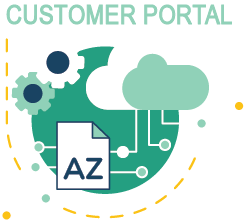Part of DTP localization includes working with a wide range of software
The policy of our translation agency is to accommodate our customers as much as possible in the field of software processing. In short, this means that what the client sends us for translation is exactly what we return to them. This is carried out to the same quality, usually even better (e.g. with scanned, faxed or older documents). We address the challenging task of translating documents created with CAD systems below.
The translation of documents created with any CAD program could be described as the nightmare of any DTP employee involved in localization. Whether it’s for project planning, drawing or modelling, creating documents with CAD (computer-aided-design) covers a very wide range of activities. This may include, for example, different types of software, software extensions, plug-ins, 2D or 3D graphics, working with objects, embedded tables, illustrations or links to other drawings or documents. CAD systems no longer have much in common with traditional DTP software (InDesign, FrameMaker, etc.), not least because localization work with DTP is primarily focused on text formatting.
Our biggest obstacle is exporting the text to be translated in such a way that it can be processed with the required CAT tool. There are not many ways to do this. As a result, we have only managed to find a more or less practicable method over time. Here, we rely on very useful software that literally splits a dxf file into a text part and a data part and can “merge” this file into a usable dxf file again once the translation is complete. Working with such a txt file (a tagged txt file that is created after the export) is still a complicated process and a large number of “locked” segments are created. The reconversion does not allow any data to be changed or deleted (except for the translation, of course). Otherwise, it would not be possible to reconvert the file. However, even this procedure does not guarantee that all the texts to be translated will actually properly “go through” the conversion process. It is therefore essential that the source text and the resulting text undergo a visual examination.
At the same time, inverted texts are also output during the process that are not visible in the scheme itself. We do not touch such texts in our work. We could remove these texts at this point. We do not, however, process them any further, in order to avoid completely mixing up the structure of the document (and we really don’t want that). During the drawing and project planning itself, it is rarely expected that the document will eventually be processed, i.e. translated, externally.
DWG/DXF files are often too complicated and intricate and the range of programs used to create them is too wide.
And here we face another challenge, the problem of compatibility. As mentioned above, there are many CAD programs. For example: AutoCAD, ArchiCAD, DraftSight, IntelliCAD, TurboCAD, ZWCAD, CATIA, Solid Edge and OrCAD. Each program has a special feature making it specific and unique. We obviously do not have all of these programs and certainly cannot be experts in each of them. AutoCAD from Autodesk is without doubt the market leader. It is also, however, the price leader (if the scaled-down light version is not considered). This is why we chose the ZWCAD program, which is more cost-effective and relatively compatible. It goes without saying that we cannot select the program that was used to create the source file, but that wouldn’t be necessary either.
In light of all of the circumstances mentioned above, we cannot avoid converting and splitting documents when processing them, which at times may even prove extensive, in order to create the required text and achieve the desired effect. In the end, however, there may be instances where we cannot process CAD documents as desired. In such cases, we can offer the translation of a PDF document as an alternative, provided that the customer can use the PDF format as the result format. This presupposes the fact that the customer is not required to further edit and modify the file.


